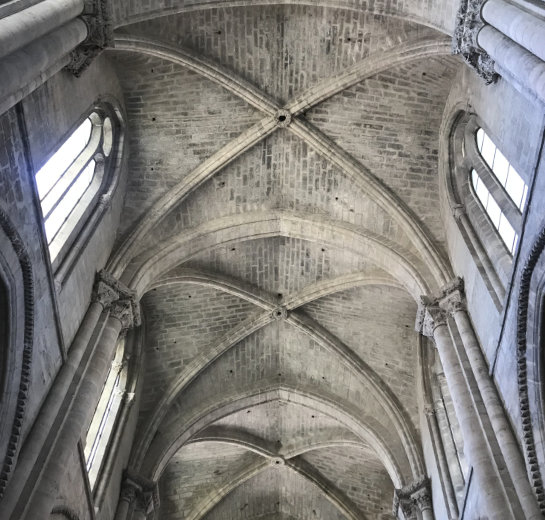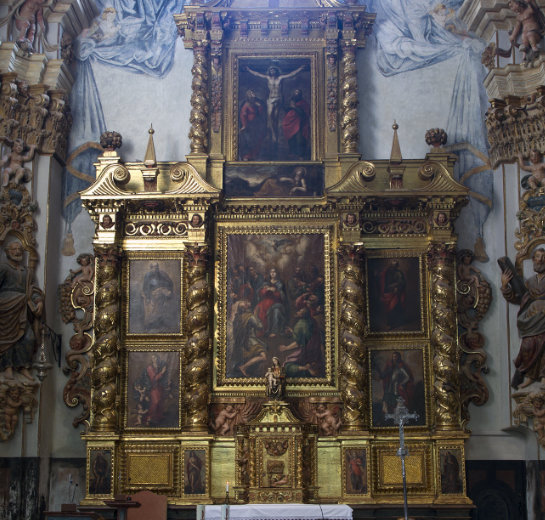It was declared a National Monument in 1884
Tudela, for the historical importance and for its character as a city in which different cultures coexisted in the Middle-Ages, becomes a place with an enviable monumental wealth, in both civil and religious buildings. The Cathedral is the main monument in the city and one of the most notorious in Navarra.
The church was conceived as a Collegiate of Saint Mary until 1783, year when it was raised to the dignity of Cathedral by Pius VI, at the request of King Carlos III.
It was declared a National Monument in 1884 for its historical and artistic importance.
Construction began at the end of XII century, at the same time that the Mosque located in this space was destroyed; so part of its architecture is Romanesque and as the works progressed in the thirteen century with the new Gothic style imposed and give a new vision to this temple.
Architectural trends
The building follows the trends of the Spanish-Languedoc architecture, made under the precepts of the Cistercian order. It was constructed with well squared ashlar stone, on the remains of the old main mosque. By the year 1188 the works would be advanced enough to use it. The Archbishop of Tarragona, Don Raimundo de Rocabertí, consecrated the ara of the altar in 1204.

The plan
The Latin plan has three aisles with four sections each, of which, the central one is the largest and has rectangular sections topped by a crossing of five sections and a deep central apse, whereas the lateral aisles have square sections.

The vaults
The vaults that are used in its construction, both for the aisles and for the transept are ribbed vaults with trefoil ribs that merge into central pieces decorated with vegetal, floral or heraldic motifs. The system of vaults of the east end consists of a main apse of gallonada vault, two lateral chapels resolved with cul-de-four vault and other two laterals covered with groin vaults.

Decoration
Since its architecture follows the Cistercian precepts, the decoration is scarce and only applied to specific points which favor the architectural elements, specially the capitals.

Artistic diversity
There have been constant works throughout history, both for extensions and by restorations and improvements; so, we can see works framed in different styles. so, we can see works framed in different styles.

Outside
Outside there are three doors: the oldest is that of the Virgin Mary, to the south. In the North Santa Maria door and in the West, at the foot of the temple, the main called Gate of Judgment. The latter is of complicated execution and the most spectacular by the symbolism represented in its monumental sculpture.
In addition outside we highlight the new tower of the XVII century. It is a magnificent construction made with a remarkable architectural effort and currently fundamental element in the physiognomy of the city.


Inside
Inside the temple we observe some chapels with various dedications. The main altar and the impressive gothic altarpiece, San Joaquin chapel with Santa Catalina gothic altarpiece, San Martin chapel that has a beautiful plateresque grille, San Juan Evangelista chapel where we can see the Virgin Blanca, beautiful polychrome stone carving of the twelfth century. And baroque chapels: Our Lady of Sorrows (with baroque altarpiece), Saint Anne (splendid baroque chapel and altarpiece with a gothic image of the patron saint) and Holy Spirit.
We will also mention the renaissance choir and the retrochoir, the baroque organ, the Main sacristy, the Capitular room and of course the Romanesque cloister of the cathedral which is part of the museum of Tudela.
If you want moreinformation about the Cathedral of Tudela you can visit the following websites:




